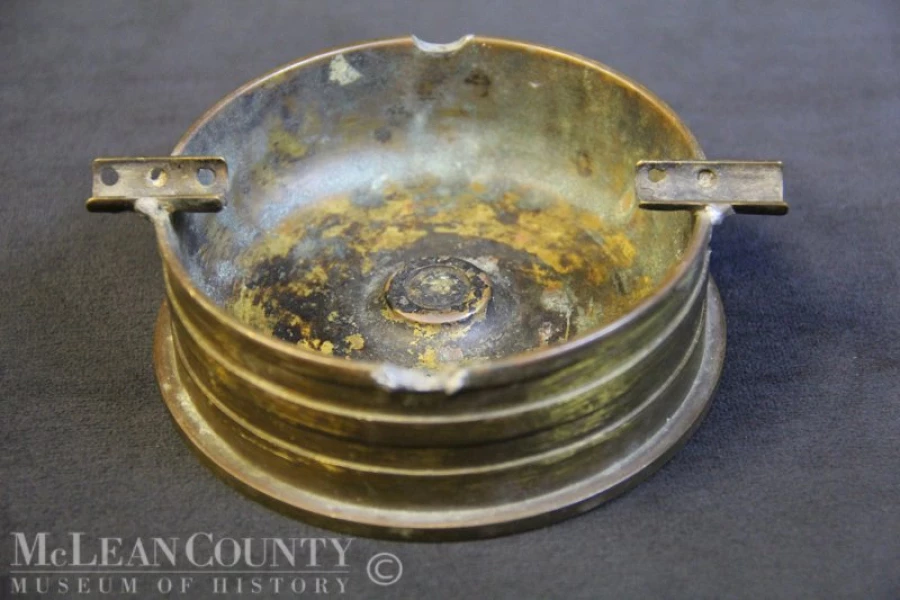The Museum owns two unique and personal pieces of history that provide a glimpse of how individuals can use their time and talents to alleviate stress during times of extreme conflict. You may have heard the term trench art before. But, what exactly is it? Although the name would imply that it is art created in the trenches by soldiers during wartime, that's only part of the story. British historical archaeologist Nicholas Saunders defines trench art as “any object made by soldiers, prisoners of war and civilians, from war material, as long as the object and the maker are associated in time and space with an armed conflict or its consequences" (http://trenchart.net/About_Trench_Art.html). (Scroll through the slide show below to see images of the objects.)The first piece (#96.8.126.3) is a 13" high vase beautifully crafted from a brass artillery shell casing during WW1. The vase's owner, Hayden Foster, was a supply truck driver stationed in France. “Verdun," embossed on the side of the vase, suggests it was made in close proximity to that location. Verdun was the site of a major battle during WWI between the German and French armies. One of the costliest in terms of loss of life, the battle was fought from February 21 to December 18, 1916. Despite the attempt to remain neutral, the U.S. ultimately declared war on Germany on April 6, 1917. (Scroll through the slide show below to see images of the objects.)The second piece of trench art (#2012.08.43) featured here is a brass ashtray created by Major George Ferree during WWII. The ashtray is created from the base plug of a 105 MM M14 artillery shell. On the bottom is etched the following: “MAJOR GEO. B. FERREE, 1942 – 1946, AIR CORPS 0-220195, CHENOA, ILL."Mr. Ferree served in both WWI and WWII, leaving the first as a 2 nd lieutenant, and the second as a major. Trench art has been created in a number of places besides battlefield trenches – army hospitals, POW camps, machine shops, and towns and villages miles away from the action. Creating trench art was a great way for soldiers to pass the time and take their minds off of the issues at hand. Objects like this create a very personal connection to those conflicts and help us understand a little bit about the men who served their country, giving up precious time away from friends and family, but not forgetting their talents!
